
Rotary Furnace
Vacuum Sealed Continuous Working Rotary Tube Furnace Rotating Tube Furnace
Item Number : KT-CRTF
Price varies based on specs and customizations
- Max. temperature
- 1200℃~1600℃
- Furnace tube diameter
- 30~280 mm
- Heating rate
- 0~20℃/min
Shipping:
Contact us to get shipping details Enjoy On-time Dispatch Guarantee.
Why Choose Us
Reliable PartnerEasy ordering process, quality products, and dedicated support for your business success.
Achieve precise and efficient material processing with KINTEK's state-of-the-art rotary tube furnace. Designed for continuous operation in controlled vacuum or atmospheric conditions, it's ideal for laboratory calcination, drying, sintering, heat treatment, and a wide range of advanced material processing applications.
Explore the Details & Components
Our Vacuum Sealed Continuous Working Rotary Tube Furnace is engineered for precision, reliability, and ease of use. Discover its robust construction and key features through these detailed images:


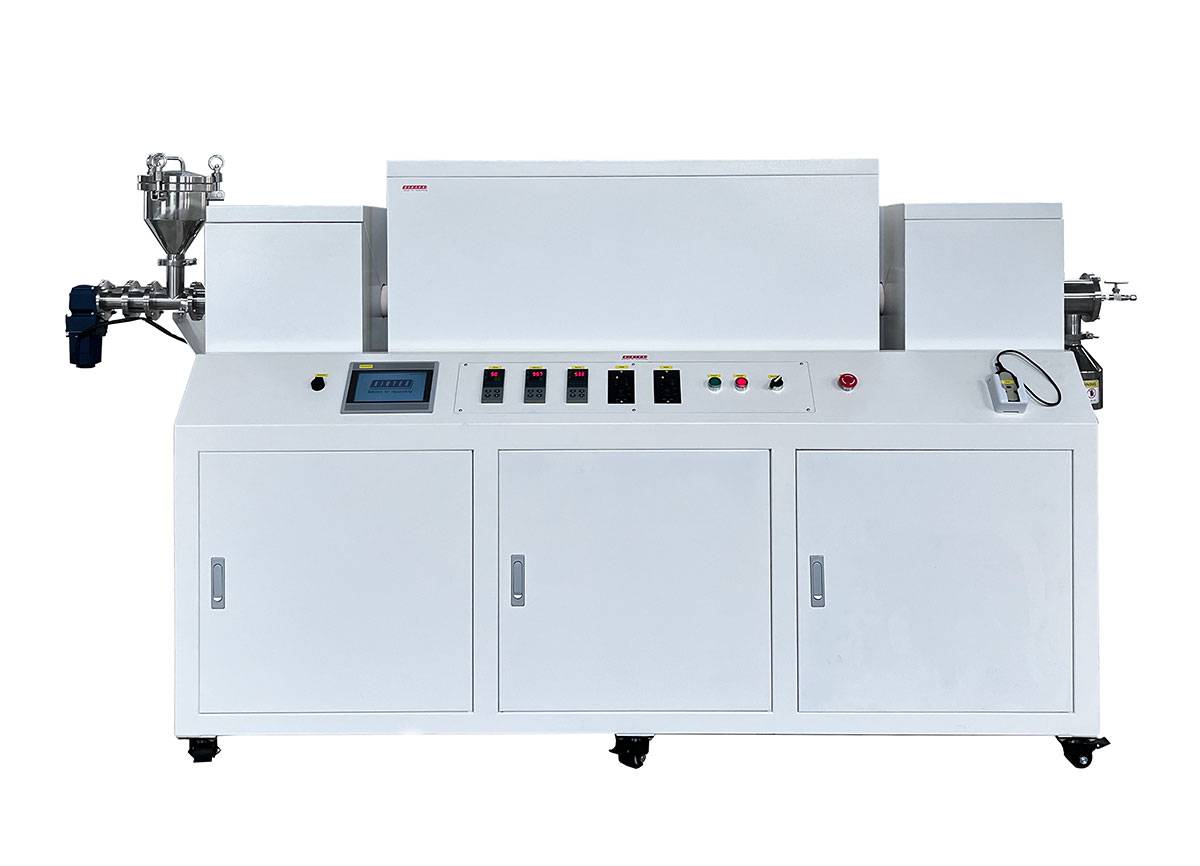

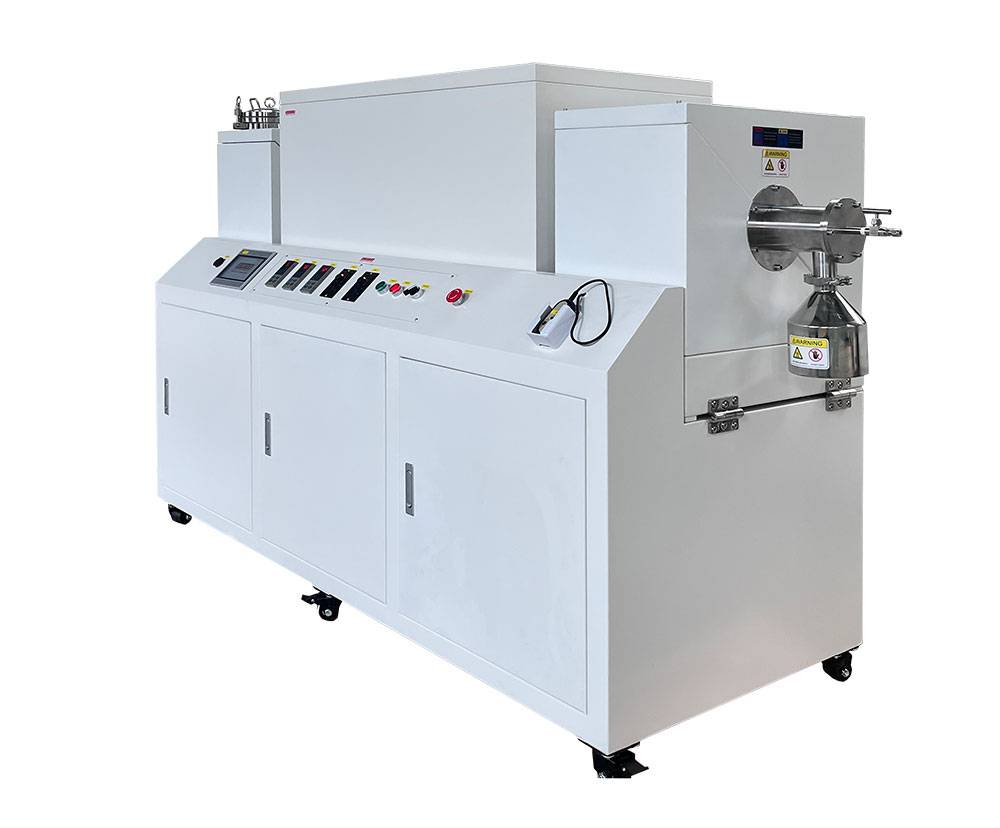
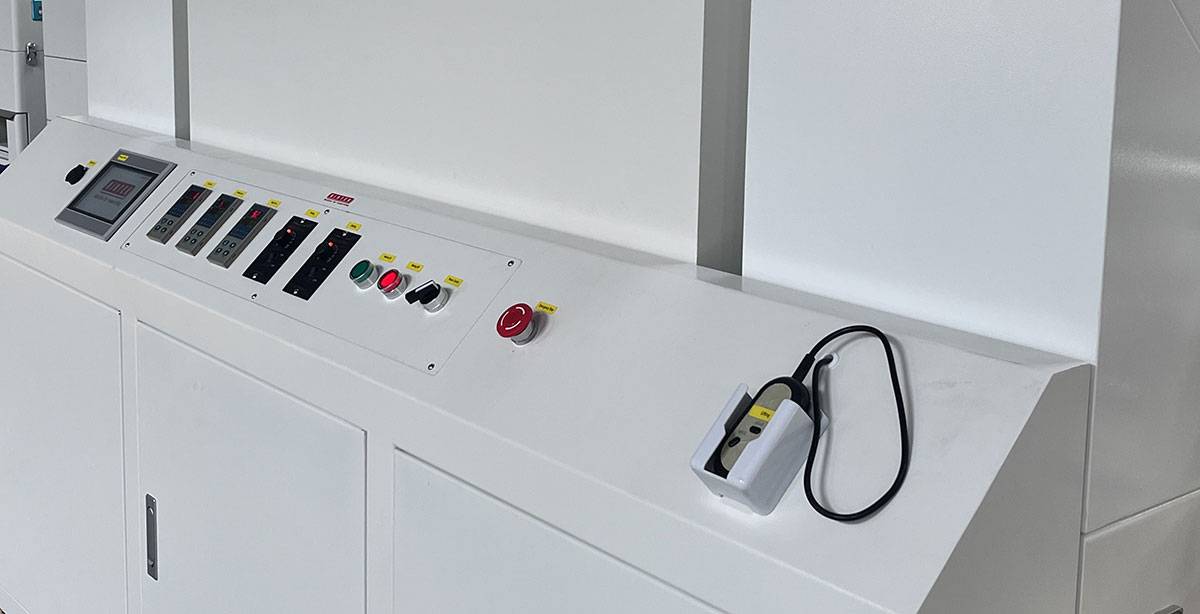
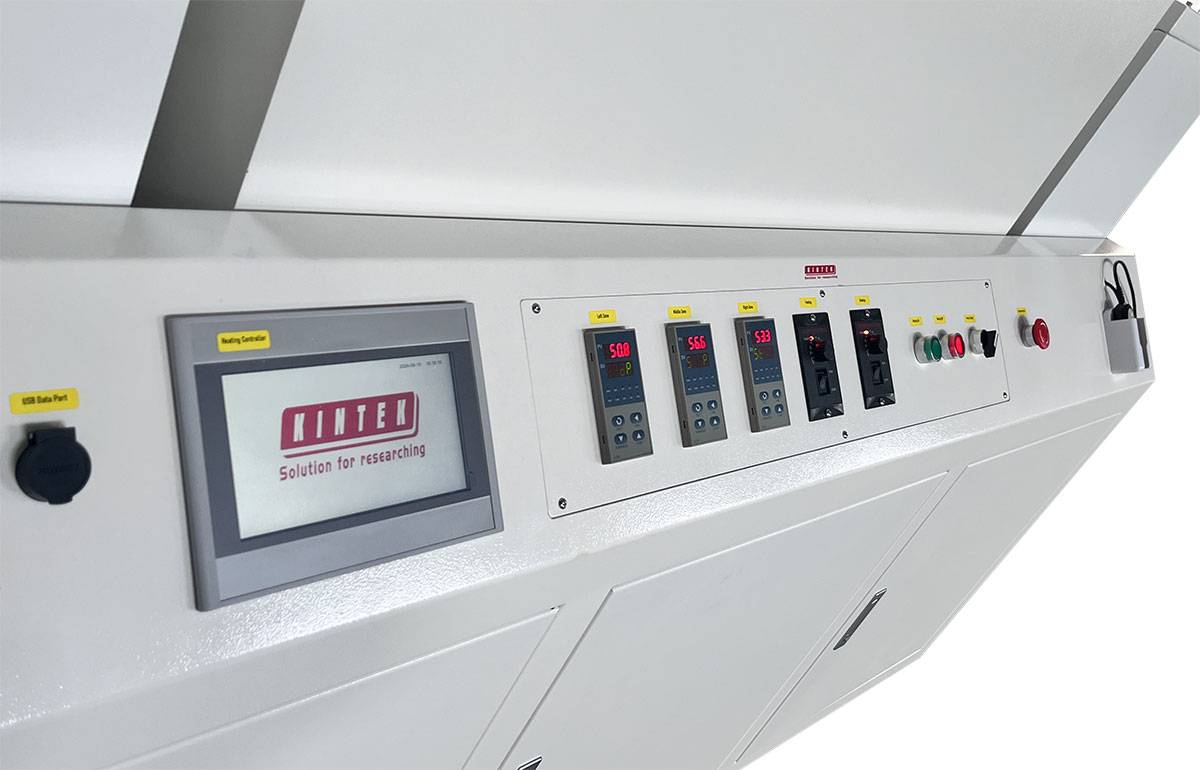
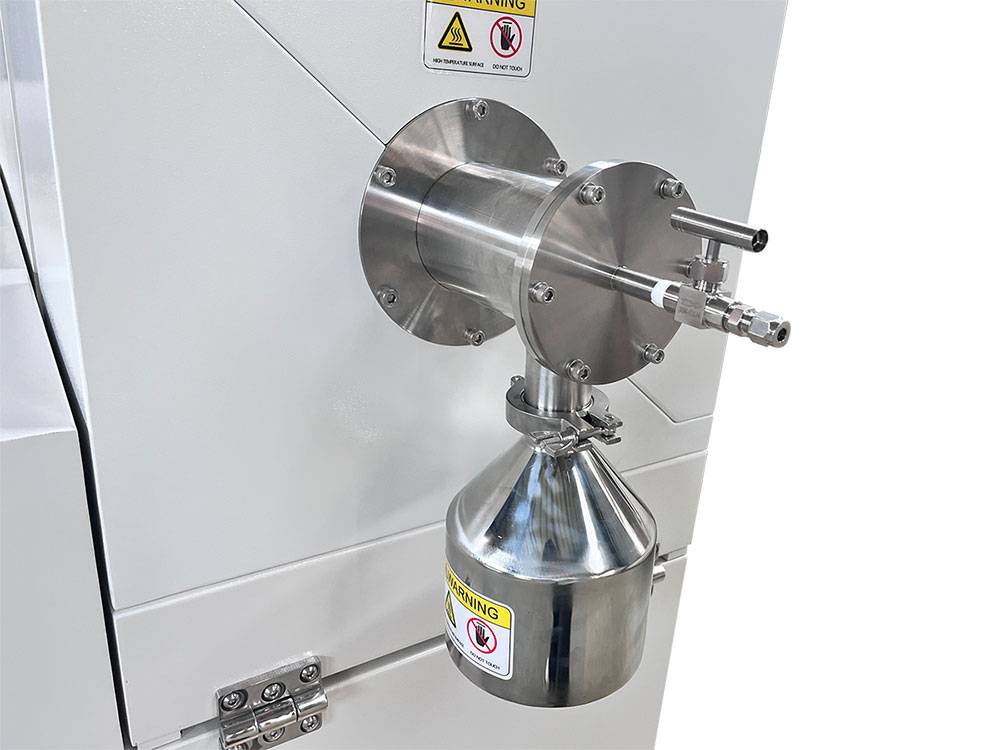
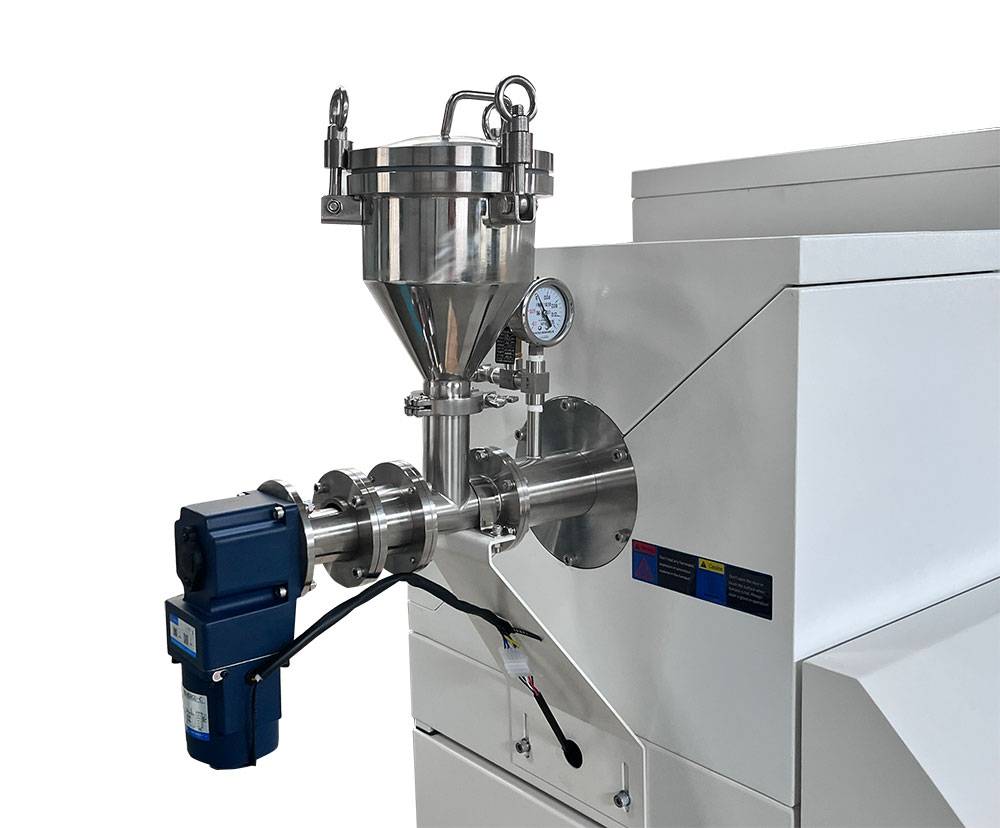
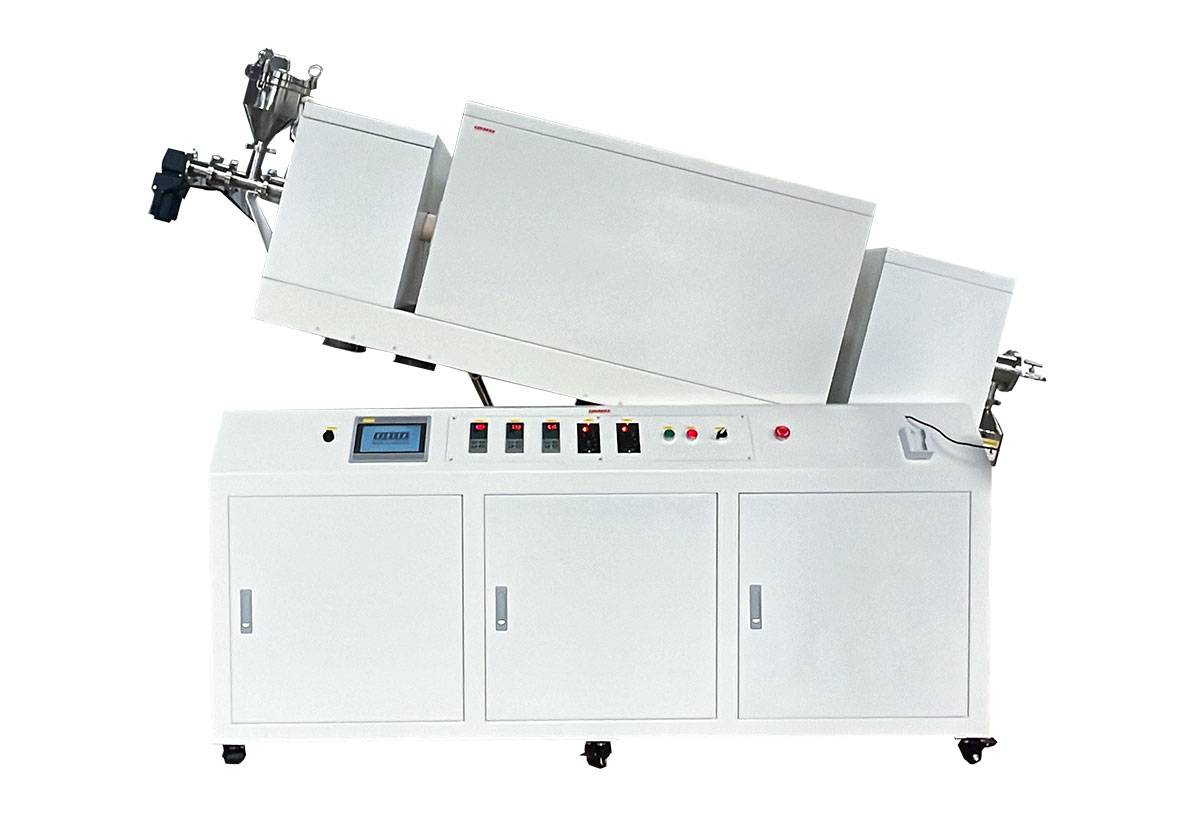
Key Benefits for Your Research & Production
KINTEK's Vacuum Sealed Continuous Working Rotary Tube Furnace is engineered to elevate your laboratory and pilot-scale operations with exceptional performance and versatility:
- Process Sensitive Materials Confidently: Advanced vacuum sealing technology (SS 304 flange with O-ring) allows processing in inert or reducing atmospheres, crucial for materials susceptible to oxidation or other atmospheric reactions.
- Enhanced Throughput & Efficiency: The continuous rotary design facilitates uninterrupted feeding and discharging of materials, significantly boosting productivity and making it ideal for large-scale production or extended experiments compared to batch-type furnaces.
- Superior Temperature Uniformity & Control: Achieve consistent product quality with the rotating furnace tube ensuring even heating. Precise PID temperature control (±1℃ accuracy) and programmable settings (heating rates from 0-10℃/min to 0-20℃/min, model-dependent) are vital for processes requiring high accuracy. Max temperatures available up to 1600℃.
- Versatile Operational Parameters: The furnace tube offers both rotation (0-20rpm, stepless speed regulation) and tilting capabilities (-5 to +30 degrees), providing flexibility to optimize processing for various material types and requirements.
- User-Friendly Operation & Monitoring: An intuitive 7-inch touch screen English image interface simplifies setup, operation, and real-time monitoring. Optional data logging capabilities enable process optimization, quality assurance, and detailed record-keeping.
- Durable & Customizable Construction: Built with high-quality heating elements (Cr2Al2Mo2 wire coil, SiC, or MoSi2 depending on model) and chamber materials (Japan alumina fiber) for longevity. Furnace tubes are available in Quartz, Metal alloys, Al2O3, or Si3N4, with various diameters and lengths customizable to your needs.
Versatile Applications Across Industries
This furnace is engineered for a diverse range of high-temperature processes, including:
- Battery Materials: Laboratory calcination and drying of positive electrode materials; heat treatment of non-strong acid-base powder and granular materials.
- Advanced Materials: High-temperature reaction, carbonization, sintering, and pyrolysis of rare earth materials, chemical catalytic materials, magnetic materials, powder metallurgy materials, and nonferrous metal materials.
- Mineral Processing: Treatment of powder or granular materials such as kaolin and other non-metallic mineral materials.
- Specialized Processes: Including graphite precarbonization and other continuous heat treatment applications.
Advanced Operating Principle
The Vacuum Sealed Continuous Working Rotary Tube Furnace operates on the principle of continuous material movement through a work tube (available in various diameters from 30mm to 280mm, and single heating zone lengths from 300mm to 800mm). Material is transported by a rotating mechanism, ensuring the entire surface area is uniformly exposed to the desired atmosphere (vacuum or inert gas) and precisely controlled temperature profile (up to 1600℃). The system typically uses high-purity quartz or alumina tubes, heated by high-performance elements like silicon carbide or MoSi2, all managed within a double-shell structure with an intelligent program controller for optimal thermal efficiency and process accuracy.
Technical Specifications
| Furnace model | KT-CRTF12 | KT-CRTF14 | KT-CRTF16 |
|---|---|---|---|
| Max. temperature | 1200℃ | 1400℃ | 1600℃ |
| Constant work temperature | 1100℃ | 1300℃ | 1500℃ |
| Heating rate | 0-20℃/min | 0-10℃/min | |
| Furnace tube material | Quartz/Metal alloys | Al2O3/Si3N4 | |
| Rotary speed | 0-20rpm | ||
| Tilting angle | -5-30 degree | ||
| Furnace tube diameter | 30 / 40 / 60 / 80 / 100 / 120 / 150 / 230 / 280 mm | ||
| Single heating zone length | 300 / 450 / 600 / 800mm | ||
| Vacuum sealing solution | SS 304 flange with O ring | ||
| Chamber material | Japan alumina fiber | ||
| Heating element | Cr2Al2Mo2 wire coil | SiC | MoSi2 |
| Temperature sensor | K type | S type | B type |
| Temperature controller | Digital PID controller/Touch screen PID controller | ||
| Temperature control accuracy | ±1℃ | ||
| Electric power supply | AC110-220V,50/60HZ | ||
| Different tube material and size and heating zone length can be customized to your specific requirements. | |||
Partner with KINTEK for Your High-Temperature Furnace Needs
Leveraging exceptional R&D and in-house manufacturing, KINTEK provides diverse laboratories with advanced high-temperature furnace solutions. Our product line, including Muffle, Tube, Rotary Furnaces, Vacuum & Atmosphere Furnaces, and CVD/PECVD/MPCVD Systems, is complemented by our strong deep customization capability to precisely meet unique experimental requirements.
Ready to advance your material processing capabilities with a tailored furnace solution? Our team is dedicated to understanding your specific needs and providing the optimal equipment.
Contact us today using the form below to discuss your project, request a detailed quote, or learn more about how our Vacuum Sealed Continuous Working Rotary Tube Furnace can be customized for your applications!
FAQ
What Are The Main Applications Of A Rotary Tube Furnace?
What Are The Main Applications Of Continuous Furnaces?
What Is The Principle Of A Rotary Furnace?
What Is A Rotating Furnace Used For?
What Is A Tube Furnace And How Does It Work?
What Are The Main Applications Of A Vacuum Furnace?
What Is An Atmosphere Furnace Used For?
What Are The Main Applications Of Multi-zone Tube Furnaces?
What Are The Common Applications Of A Split Tube Furnace?
What Are The Key Features Of A Rotary Tube Furnace?
What Are The Key Features Of Continuous Furnaces?
What Are The Advantages Of Using A Rotary Furnace?
What Are The Main Types Of Rotating Furnaces Available?
What Are The Main Applications Of Tube Furnaces?
What Are The Key Features Of A Vacuum Furnace?
What Are The Key Features Of An Atmosphere Furnace?
What Are The Key Features Of Multi-zone Tube Furnaces?
What Are The Key Features Of A Split Tube Furnace?
How Does A Rotary Tube Furnace Work?
What Should Be Considered When Choosing A Continuous Furnace?
What Are The Key Features Of A Rotary Furnace?
How Does A Rotating Furnace Work?
What Are The Advantages Of Using A Tube Furnace?
How Does A Vacuum Furnace Work?
How Does An Atmosphere Furnace Work?
How Does A Multi-zone Tube Furnace Work?
How Does A Split Tube Furnace Work?
What Are The Advantages Of Using A Rotary Tube Furnace?
What Are The Advantages Of Using A Continuous Furnace?
What Are The Common Applications Of A Rotary Furnace?
What Are The Advantages Of Using A Rotating Furnace?
What Types Of Tube Furnaces Are Available?
What Are The Advantages Of Using A Vacuum Furnace?
What Are The Advantages Of Using An Atmosphere Furnace?
What Are The Advantages Of Using A Multi-zone Tube Furnace?
What Are The Advantages Of Using A Split Tube Furnace?
What Temperature Can A Rotary Tube Furnace Reach?
Can Continuous Furnaces Be Customized For Specific Industrial Needs?
How Does A Rotary Furnace Handle Different Materials?
What Safety Features Are Included In Rotating Furnaces?
What Temperature Ranges Can Tube Furnaces Achieve?
What Types Of Materials Can Be Processed In A Vacuum Furnace?
What Types Of Gases Can Be Used In An Atmosphere Furnace?
What Types Of Multi-zone Tube Furnaces Are Available?
What Temperature Can A Split Tube Furnace Reach?
What Types Of Materials Can Be Processed In A Rotary Tube Furnace?
Can Rotating Furnaces Be Customized For Specific Applications?
Can Tube Furnaces Operate Under Different Atmospheres?
What Is The Difference Between Hot Wall And Cold Wall Vacuum Furnaces?
What Safety Features Are Available In Advanced Atmosphere Furnaces?
Why Is The Split Design Beneficial In A Tube Furnace?
What Makes KINTEK Tube Furnaces Special?
Can Vacuum Furnaces Be Customized For Specific Applications?
4.9
out of
5
Incredible efficiency and precision! This furnace has revolutionized our lab work. Worth every penny!
4.8
out of
5
Fast delivery and top-notch quality. The vacuum seal is flawless, and the rotation is smooth as silk.
4.7
out of
5
A game-changer for continuous processes. The durability is impressive, and it’s so easy to operate.
4.9
out of
5
Technologically advanced and built to last. Our research has never been more efficient. Highly recommend!
4.8
out of
5
The perfect balance of quality and value. The rotary mechanism is a dream for continuous operations.
4.7
out of
5
Exceptional performance and reliability. The vacuum seal holds perfectly, even under extreme conditions.
4.9
out of
5
This furnace is a beast! The continuous working feature is a lifesaver for our high-throughput needs.
4.8
out of
5
Superb craftsmanship and innovative design. It’s like the furnace reads our minds—flawless every time.
4.7
out of
5
The speed and consistency are unmatched. Our experiments run smoother than ever before.
4.9
out of
5
A stellar investment! The rotary tube feature is a game-changer for our material testing.
4.8
out of
5
Outstanding durability and performance. The vacuum seal is impeccable, and the rotation is buttery smooth.
4.7
out of
5
Precision engineering at its finest. This furnace has exceeded all our expectations. Bravo!
REQUEST A QUOTE
Our professional team will reply to you within one business day. Please feel free to contact us!
Related Products

Split Multi Heating Zone Rotary Tube Furnace Rotating Tube Furnace
Precision Split Multi Heating Zone Rotary Tube Furnace for high-temperature material processing, featuring adjustable tilt, 360° rotation, and customizable heating zones. Ideal for labs.
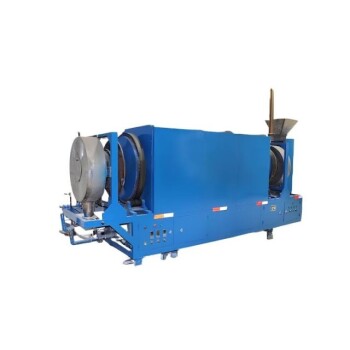
Electric Rotary Kiln Continuous Working Small Rotary Furnace Kiln for Pyrolysis Plant Heating
KINTEK's electric rotary furnaces offer precision heating up to 1100°C for calcination, drying, and pyrolysis. Durable, efficient, and customizable for labs and production. Explore models now!

High Pressure Laboratory Vacuum Tube Furnace Quartz Tubular Furnace
KINTEK High Pressure Tube Furnace: Precision heating up to 1100°C with 15Mpa pressure control. Ideal for sintering, crystal growth, and lab research. Customizable solutions available.

Vacuum Hot Press Furnace Machine Heated Vacuum Press Tube Furnace
Discover KINTEK's advanced Vacuum Tube Hot Press Furnace for precise high-temperature sintering, hot pressing, and material bonding. Customizable solutions for labs.

Laboratory Vacuum Tilt Rotary Tube Furnace Rotating Tube Furnace
KINTEK Laboratory Rotary Furnace: Precision heating for calcination, drying, sintering. Customizable solutions with vacuum & controlled atmosphere. Enhance research now!

Custom Made Versatile CVD Tube Furnace Chemical Vapor Deposition CVD Equipment Machine
KINTEK's CVD Tube Furnace offers precision temperature control up to 1600°C, ideal for thin film deposition. Customizable for research and industrial needs.

Multi Heating Zones CVD Tube Furnace Machine for Chemical Vapor Deposition Equipment
KINTEK's Multi-Zone CVD Tube Furnaces offer precision temperature control for advanced thin film deposition. Ideal for research and production, customizable for your lab needs.

Split Chamber CVD Tube Furnace with Vacuum Station CVD Machine
Split Chamber CVD Tube Furnace with Vacuum Station - High precision 1200°C lab furnace for advanced materials research. Customizable solutions available.

Electric Rotary Kiln Small Rotary Furnace Biomass Pyrolysis Plant Rotating Furnace
KINTEK's Rotary Biomass Pyrolysis Furnace converts biomass to biochar, bio-oil, and syngas efficiently. Customizable for research or production. Get your solution now!

Vacuum Hot Press Furnace Machine Heated Vacuum Press
KINTEK Vacuum Hot Pressing Furnace: Precision heating & pressing for superior material density. Customizable up to 2800°C, ideal for metals, ceramics, and composites. Explore advanced features now!

Vacuum Heat Treat Sintering and Brazing Furnace
KINTEK Vacuum Brazing Furnaces deliver precision, clean joints with superior temperature control. Customizable for diverse metals, ideal for aerospace, medical, and thermal applications. Get a quote!

Small Vacuum Heat Treat and Tungsten Wire Sintering Furnace
Compact vacuum tungsten wire sintering furnace for labs. Precise, mobile design with superior vacuum integrity. Ideal for advanced material research. Contact us!
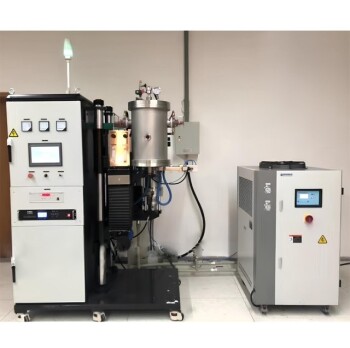
Vacuum Heat Treat Sintering Furnace Molybdenum Wire Vacuum Sintering Furnace
KINTEK's Vacuum Molybdenum Wire Sintering Furnace excels in high-temperature, high-vacuum processes for sintering, annealing, and material research. Achieve precise 1700°C heating with uniform results. Custom solutions available.

600T Vacuum Induction Hot Press Vacuum Heat Treat and Sintering Furnace
600T Vacuum Induction Hot Press Furnace for precise sintering. Advanced 600T pressure, 2200°C heating, vacuum/atmosphere control. Ideal for research & production.

Vacuum Heat Treat Sintering Furnace with Pressure for Vacuum Sintering
KINTEK's Vacuum Pressure Sintering Furnace offers 2100℃ precision for ceramics, metals, and composites. Customizable, high-performance, and contamination-free. Get a quote now!

Inclined Rotary Plasma Enhanced Chemical Deposition PECVD Tube Furnace Machine
Advanced PECVD Tube Furnace for precise thin film deposition. Uniform heating, RF plasma source, customizable gas control. Ideal for semiconductor research.

Slide PECVD Tube Furnace with Liquid Gasifier PECVD Machine
KINTEK Slide PECVD Tube Furnace: Precision thin film deposition with RF plasma, rapid thermal cycling, and customizable gas control. Ideal for semiconductors and solar cells.

Inclined Rotary Plasma Enhanced Chemical Deposition PECVD Tube Furnace Machine
KINTEK's PECVD coating machine delivers precision thin films at low temperatures for LEDs, solar cells & MEMS. Customizable, high-performance solutions.

1700℃ High Temperature Laboratory Tube Furnace with Quartz or Alumina Tube
KINTEK's Tube Furnace with Alumina Tube: Precision heating up to 1700°C for material synthesis, CVD, and sintering. Compact, customizable, and vacuum-ready. Explore now!
Related Articles

Why Your High-Purity Metals Oxidize in a Perfect Vacuum—And How to Stop It
Frustrated by oxidized metals from your vacuum furnace? Discover the real culprit isn't the vacuum but the cooling phase, and how to fix it.

Why Your Vacuum Furnace Failed After the Lab Move—And How to Prevent It
Discover why vacuum furnaces often fail after being moved and how robust engineering prevents costly damage to seals and components. Protect your investment.

Your Furnace Isn't Just a Heater: Why 'Good Enough' Equipment Is Sabotaging Your Advanced Materials Research
Struggling with inconsistent results from your tube furnace? Discover why standard equipment fails and how a modular, customizable approach is key to success.

Why Your Tube Furnace Is Failing Your Experiments (And It’s Not the Temperature)
Discover the hidden reason your high-temperature experiments fail. It's not your process; it's a material mismatch inside your furnace. Learn how to fix it.

Why Your High-Temperature Furnace Fails: The Hidden Culprit Beyond the Cracked Tube
Frustrated by failed high-temp experiments? Learn why replacing parts doesn't work and how a system-engineered furnace ensures reliable, repeatable results.

Why Your Crystal Growth Experiments Are Failing: The Hidden Culprit in Your Tube Furnace
Struggling with inconsistent CVT results? Discover why your tube furnace's temperature gradient, not your chemistry, is the likely culprit and how to fix it.

Beyond the Program: Why Your Sintering Fails and How to Guarantee Uniformity
Struggling with cracked or inconsistent parts? Discover why your furnace's thermal environment, not just your program, is the real culprit and how to fix it.

Beyond the Scrubber: Why Your Furnace Design is the Real Key to Environmental Compliance
Stop struggling with complex exhaust systems. Discover how the right furnace design inherently minimizes emissions and simplifies compliance.

Why Your High-Purity Metal Distillation Fails: It’s Not Your Process, It’s Your Furnace
Struggling with inconsistent metal purification? Discover why the root cause is often your furnace architecture, not your process, and how to fix it.

Why Your Sintered Parts Fail: It’s Not Just About Heat, But Pressure and Purity
Struggling with porous, weak, or contaminated sintered materials? Discover why simply raising the temperature isn't the answer and how the interplay of heat, pressure, and vacuum is the key.

Your Vacuum Furnace Is a System, Not a Component—Here’s Why That Changes Everything
Struggling with inconsistent high-temperature vacuum processes? Discover why a bigger pump isn't the answer and how an integrated system approach is key.

How to Select the Right Vacuum Hot Pressing Furnace Temperature for Your Materials
Learn how to choose the right vacuum hot pressing furnace temperature for materials like ceramics, metals, and alloys. Optimize sintering with expert tips.